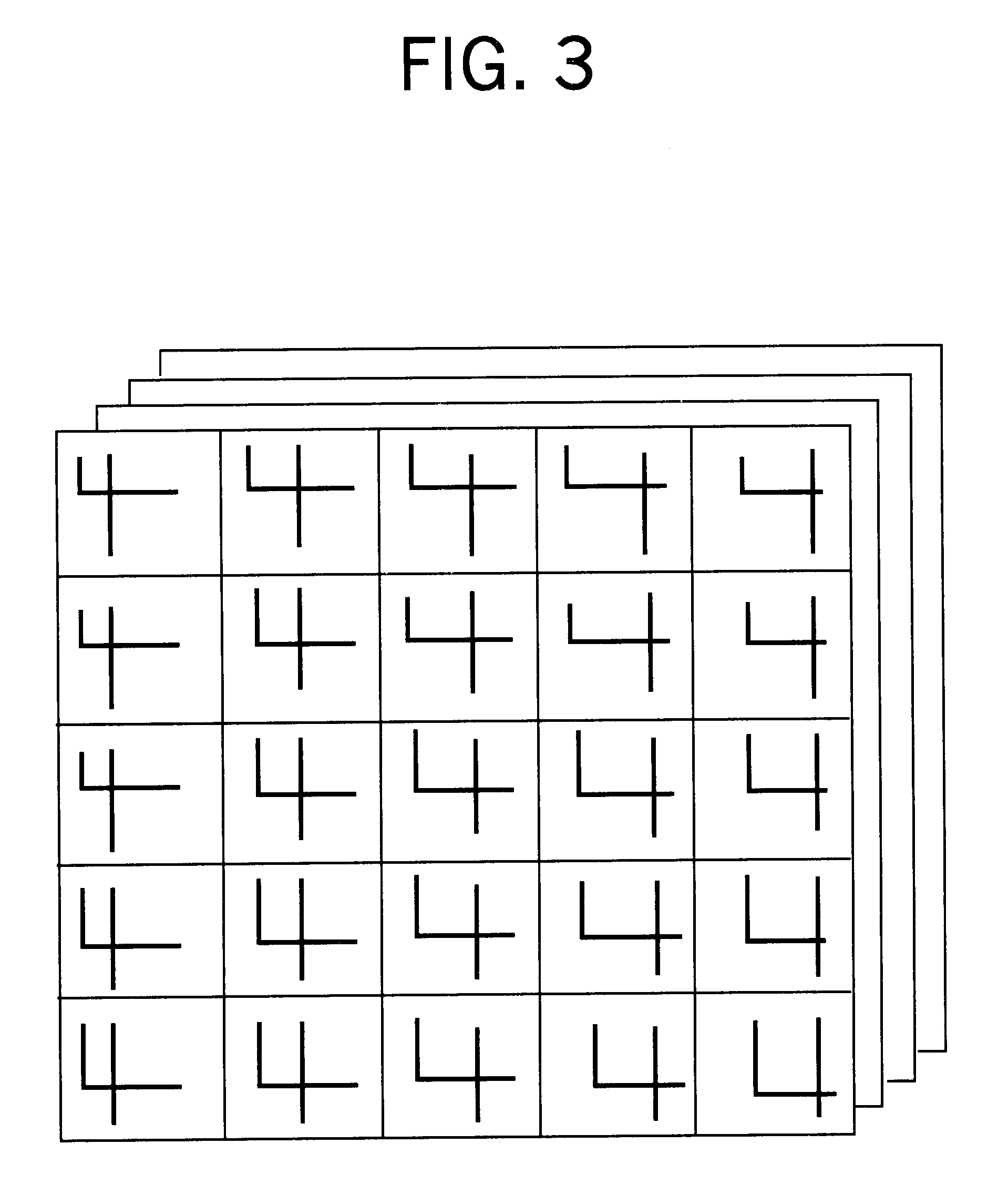Process and equipment for recognition of a pattern on an item presented
a technology for pattern recognition and items, applied in the field of process recognition of patterns on items presented, can solve the problems of rejecting and accepting inaccurate items, unable to recognize, and unable to recognize,
- Summary
- Abstract
- Description
- Claims
- Application Information
AI Technical Summary
Benefits of technology
Problems solved by technology
Method used
Image
Examples
Embodiment Construction
FIG. 1 shows in diagram form the structure of the overall recognition system of the preferred embodiment of the invention. It consists of at least two recognition sub-systems, what is known as the primary recognition 1 and after this, a component 3, which has been trained to recognize, in particular those characters which the primary recognition has not recognized or only poorly recognized. Hence, this subsequent component uses a set of characters which is complementary to the primary recognition and it is therefore designated complementary recognition. In addition, it must contain matrices with form categories, so that it is able to recognize, whether for example a new trendy character form has appeared. FIG. 1 shows only two recognition sub-systems 1 and 3. However, those of ordinary skill in the art of character pattern recognition will realize that it is possible to have other such sub-systems, either inserted between the primary recognition and complementary recognition or, fol...
PUM
 Login to View More
Login to View More Abstract
Description
Claims
Application Information
 Login to View More
Login to View More - R&D
- Intellectual Property
- Life Sciences
- Materials
- Tech Scout
- Unparalleled Data Quality
- Higher Quality Content
- 60% Fewer Hallucinations
Browse by: Latest US Patents, China's latest patents, Technical Efficacy Thesaurus, Application Domain, Technology Topic, Popular Technical Reports.
© 2025 PatSnap. All rights reserved.Legal|Privacy policy|Modern Slavery Act Transparency Statement|Sitemap|About US| Contact US: help@patsnap.com



